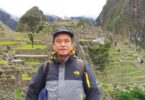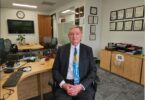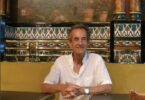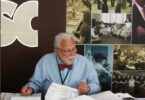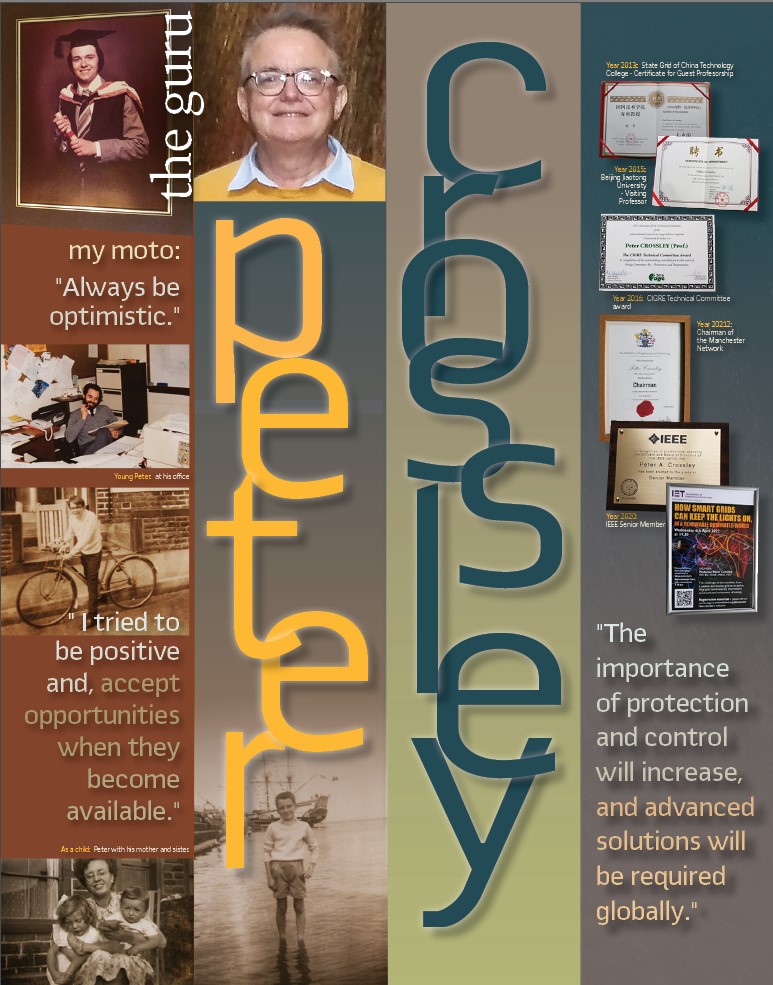
PAC World: When and where were you born?
P.C.: I was born in 1956 in Harle Syke, a village within the parish of Briercliffe and located three miles East of Burnley, Lancashire, England. Briercliffe has a current population of about 4000, and is an area with a long rural history, including settlements and stone circles dating back to the Bronze age and more recently Romano-British farmsteads. After the Norman conquest of England, it became a part of the Honor of Clitheroe. Nearly a thousand years later, when I first started voting, the parliamentary constituency was still Clitheroe. The Victorian coal-based industrial revolution changed Briercliffe. Harle Syke was established with seven cotton weaving mills, terraced housing for the workers and with tram and road links into Burnley.
PAC World: Where did you grow up and where did you go to school?
P.C.: I grew up with my sister Janet in Harle Syke and didn’t leave until I went to university. Our home was opposite St James Church, consequently I was Baptized and Confirmed in the Anglican Church of England and served as an altar boy. Regrettably, my choral abilities are limited and consequently I never joined the choir. Close to where I lived was Queen Street Mill, which finally closed in 1982, ending a century of industrial weaving in Harle Syke. Thankfully, the mill became a textile museum, preserving it as the world’s last 19th Century steam powered cotton weaving mill. The Engine which powered the belt system that drove the looms was made in Nelson, Lancashire and powered by two coal fired Lancashire boilers made in Hyde, Lancashire. The coal for the boilers originally came from Bank Hall Pit, Burnley, which pre-nationalization in 1947 was owned by the Thursby family. This philanthropic family, with money from “Black Gold” donated their house, located next to the Pit, to the town and during the First World War it became a military hospital and in 1919 the Maternity Hospital where I was born.
A member of the Thursby family married General Scarlett who led the successful Charge of the Heavy Brigade during the Battle of Balaclava in the Crimean War of 1854. This was significantly more successful than the suicidal charge of the Light Brigade which occurred a few days later. Interestingly, the former is forgotten, but due to poems by Tennyson and the movie industry the latter will continue as a heroic example of incompetence and poor communications. Many years later, I visited Sevastopol in the Crimea to deliver a course on numerical protection and control and was taken to see the Panorama which commemorates how the Russians repulsed the British, French and Turkish forces during the 1855 Siege of Sevastopol. 87 years later, when Sevastopol was next surrounded by an invading army, the last ship to leave the battle carried the Panorama to safety, leaving the Red Army to continue fighting. When I was five, I went to Haggate Primary School, a 20-minute walk from my home and located in Haggate, a small village at a crossroads. Many of my ancestors, on my father’s side, are buried in the graveyard linked to the Baptist Chapel which at this time was located next to the school. Haggate is also home to a famous public house, established in the 16th Century, which in the 19th Century built a crown bowling green, obviously designed to encourage men to partake of alcoholic refreshments. This was not acceptable to the local chapel, so they built a better bowling green, with free water delivered by a very ornate water fountain supplied from a local spring.
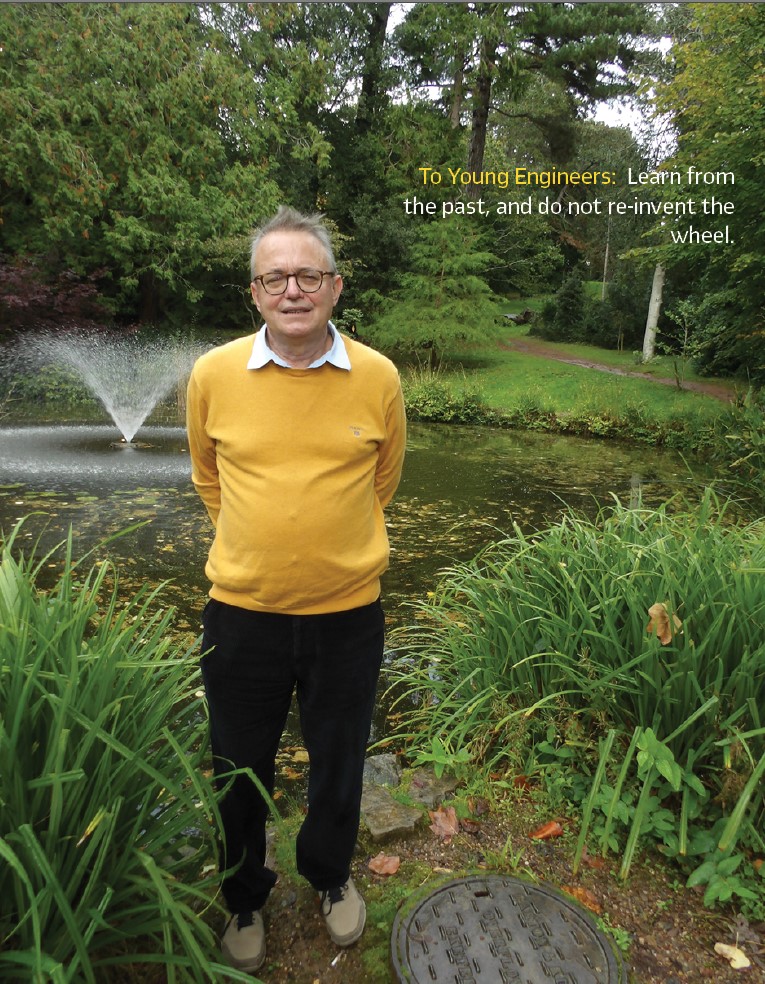
Arguably, the best day in my school career was when the school burnt down. Builders had been refurbishing the main hall and early on a winter evening, the fire-brigade were called. My friends informed me of the excitement, and we all worked up the hill to see the school burning. I hoped this was the end of my schooling, but sadly all the community halls, belonging to all the different branches of protestant religion and the Towns Women’s Guild were repurposed into classrooms, and a few days later teaching was restored. At the age of 10, myself and most of my classmates failed the 11-plus test, and we were directed to a large secondary modern school in Brierfield, a small town between Burnley and Nelson, which is a 30-minute school bus journey from home. This was now the big school, and I remember the fear and concerns in being one of the smallest pupils. Thankfully, I knew some older pupils at the school, and they ensured the transition was relatively smooth and I established a supportive group of school friends.
PAC World: Did you have any specific interests while in school?
P.C.: I always found Mathematics easy, but because I had gone to a secondary modern school, I was expected to become a technician or get a Trade. Hence, in addition to the usual academic subjects, we studied woodwork, metalwork and technical drawing. For some crazy reason we only studied General Science, rather than Physics, Chemistry and Biology. My worse subject was French, although I managed to drop this before I sat my GSE Ordinary Levels at age 16, which meant my lowest mark was in English.
At home, my hobbies were fixing old “valve” radios, playing with transistor circuits, reading electronic and modern history magazines, and using Meccano in conjunction with electric motors to build model cars. I was also very active in the Scouts, and under pressure from my mother got involved in numerous outdoor activities. The local Scout Leader was a former Paratrooper, who landed at Arnhem in 1944, and believed all boys should have basic survival skills. Thankfully, unlike my Parents or Grandparents generation my survival skills were never put to test. Both my grandfather’s fought in the first world war, one losing a leg in Gallipoli, suffering shell-shock and acquiring lots of shrapnel, which sadly remained within his body until he passed away. His wife, my grandmother, was always angry about how the British Government treated the Great War invalids, and when he passed away, she destroyed everything related to his military career, including all his medals, uniform and war pictures. When hostilities returned in the 2nd World War, she forbids her youngest son volunteering to join the army, although since he worked in a reserved occupation, he avoided conscription. According to my mother, who was slightly younger than her brother, he was sent an anonymous letter with a white feather, as a perceived sign of his cowardice. The other thankfully had a slightly easier war, mainly because he lost an eye as a child, and somehow managed to avoid going over the top.
My father married my mother in 1946, a few months after my father returned to England after nearly three years in India and Burma (Myanmar) with the “Glosters”. He was a Bren Gunner and a picture of him, and four army friends, holding a Japanese flag is now in the Soldiers of Gloucester Museum. When I was young, he would never talk about the war, but in his later years, he became more interested in the Burma Star Association and would talk about firing bursts when “enemy” noises were heard in the jungle, how he used to swap his cigarette rations for chocolate and sadly some extreme events which are better forgotten. I remember his response to my question about what the best day of his life was. I think he was supposed to say when he married my mother, but he said when he heard the Americans had dropped the bombs on Hiroshima and Nagasaki, and the war was over. Perhaps understandable, when you consider in 1945, he had expected to fight his way to Japan, and probably die. During the year I completed my GCE O-levels in a Secondary Modern School, education changed, and all the schools in my area became comprehensives. Perhaps more importantly for me, the local authority decided all “sixth forms” in their schools would close, and all academic education and training from the age 16 to 18, would be undertaken in large tertiary colleges. This only occurred in some parts of England and is still a very controversial subject today. I went to Nelson and Colne College and studied GCE Advanced Levels in Maths, Further Maths, Physics and General Studies. Because I was studying double Maths, I was taught in a small class of seven pupils, and this was perfect for me. I now went from being one of the top Maths students in a Secondary Modern to average in an elite A-level Maths class. At first it was a shock, but hard work and perseverance paid off. At the time, I thought Physics was boring, but Maths had real beauty; I now suspect this is more related to the quality of teaching and perhaps because I was studying traditional Newtonian Physics, rather than the modern Physics some of my friends studied.
PAC World: Can you think of someone or something in your childhood that influenced your decision to become an engineer?
P.C.: My mother was the biggest influence on my career. She encouraged me to study hard and even forced me to attend elocution lessons to try to improve my English pronunciation and articulation. Remember I was from a working-class Lancashire family, and the majority of people in positions of power, spoke “BBC” English. My mother also encouraged me to play with electronics, fix radios etc. and arguably to toughen me up and become more outgoing join the Scouts. My elder sister rebelled more about our controlling mother, but I accepted it and worked hard, and later this brought me benefit. I suspect, my mother behaved as she did because she was the seventh child of nine and having done well in school and becoming a Proofreader in a publisher, her eyes started failing and over a period of many years went from partially to fully blind. Often, at this time Fathers worked full time and were the main breadwinners, whilst Mothers looked after the house and children, often returning to part-time work as the children became more independent. This was definitely the situation in my family; my mother controlled everything related to home, expenditure, my childhood and teenage years and to a lesser extent my sister. It seemed to work reasonably well, and we had a happy family life.
PAC World: Where did you go to university and why did you choose that particular one?
P.C.: I went to the University of Manchester Institute of Science and Technology (UMIST) in 1974 to study Electronics as a part of a 3-year Electrical and Electronic Engineering (EEE) Bachelor of Science Degree. This was then a financially autonomous institution, operating within the Victoria University of Manchester. In 2004, UMIST and the Victoria University of Manchester fully merged to form The University of Manchester. I chose UMIST because it had the best reputation in Northern England for EEE, and I didn’t want to move to London. In many ways, I was the privileged generation, the massive expansion of universities several years earlier, ensured in 1974 students with good GCE A-level grades could go to university for free, and a bursary was paid to partially cover living expenses. The size of the bursary depended on your family income, and in my case, my parents increased the government contribution to the full amount. Hence, I could concentrate on my studies and not work in the evenings or weekends. I did work during the summer vacations, prior to university in a textile warehouse, then the following year on a building site, and finally as a summer placement student at the GEC Switchgear factory in Trafford Park, Manchester.
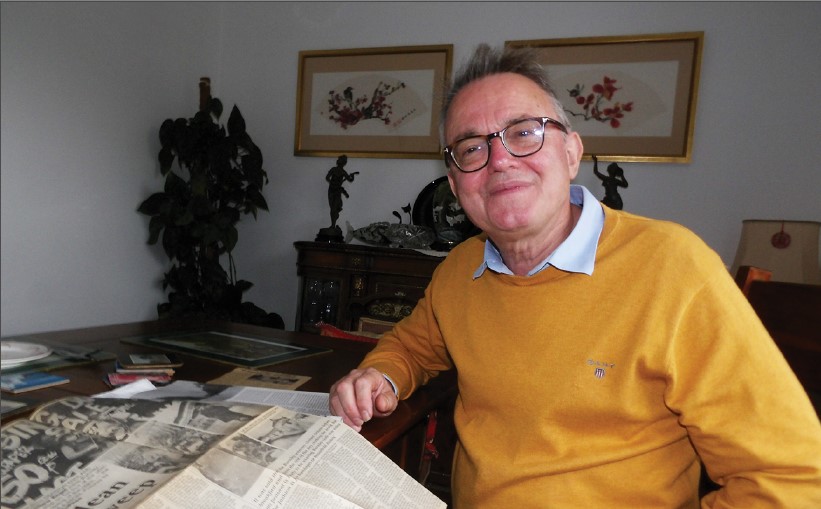
PAC World: Why did you study electrical engineering?
P.C.: I went to university to study electronics, because I was academically strong in Maths and played with electronic as a hobby. It was also the period where analogue electronics was changing the world, although the digital world was still restricted to expensive remote main-frame or minicomputers. In 1972, I played on my first computer game “landing a man on the moon”, using a Teletype keyboard linked to a remote IBM computer, and everything was entered using text. The following year Sinclair introduced the first UK home microcomputer and arguably the world changed for British teenagers. If I had been ten years younger, would I have studied EEE or studied for a computer science degree.During the first year of my EEE degree we still used slide-rules, but by the start of year 2 UMIST allowed calculators in exams, and I bought my first Scientific Calculator, which cost me two-weeks wages.
My first tutor at UMIST was Jos Arrillaga, an expert in HVDC, but he decided to leave UMIST and move to New Zealand; nothing to do with me being his tutee. My second tutor was John Sanderson, an expert in power system protection, and probably the reason I became a protection engineer.
Once I joined UMIST, I decided electrical power engineering was for me more interesting than electronics, although still my highest marks tended to be in mathematics and electromagnetism. In my third and final year at UMIST, my project supervisor was John Sanderson, and my project involved the detection of saturation in a current transformer by injecting a high frequency signal into a CT, via a circuit that resonated when the core went into saturation. This could then be used to stabilize a differential protection scheme. John suggested I should join the Relay Design Department at GEC Measurements in Stafford and 46 years later I am still trying to get relays to work correctly.
PAC World: Did you have any other interests than learning while at UMIST?
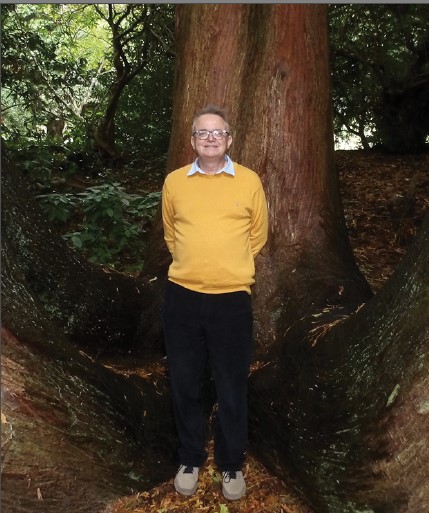
P.C.: This is arguably the most difficult question. I didn’t study all the time, but I was a hard-working student and really enjoyed my studies and especially project activities. I would go to parties with friends, attend music events and join the pub crawls that were then a part of student life. My musical taste was dominated by bands that use synthesizers and especially ELP, YES and Rick Wakeman, although I did attend Folk Music evenings and enjoyed some Punk.
PAC World: What made you decide to continue your education and why at the University of Cambridge?
P.C.: When I joined GEC Measurements, I worked on a project to use discrete CMOS logic to implement an auto-reclosure relay, but it rapidly became obvious the best option was to use a single chip microcontroller to implement the logic. At the time, few in the company were familiar with microprocessors and I was given a free hand to design and develop the relay. Senior Application Engineers, and especially Chris Delgado, was an expert in auto-reclosure using electro-mechanical relays and I learnt how to implement their ideas in assembly language, and all within 2K of memory. 30 years later, I saw this relay still operating correctly in a 500kV substation in Cairo.
In late 1978, I discussed with Ted Walker (Chief Engineer) the possibility of studying for a PhD degree, and encouraged by Miles Redfern, it was suggested I should study at Cambridge under Peter McLaren. Ted Walker agreed for the company to sponsor me at Cambridge, on a topic related to distance protection and Peter McLaren agreed to be my supervisor and suggested I apply to Churchill College, where he was a Fellow. I was accepted by Churchill College and Cambridge and my starting date was September 1979.
Peter McLaren did not want me to study impedance-based distance protection and jointly we persuaded Ted Walker to allow me to study the possibility of using high frequency signals to implement protection. Initially, I thought the frequency spectrum visible in the voltage and current signals seen when a fault occurred could be used for distance protection, but problems were soon experienced. My research moved into the use of fault instigated forward and reverse travelling waves, linked to correlation techniques used to detect the time delay between the waves progressing towards the fault and those reflected by the fault. The major challenge was how to extract the fault reflected wave from the noise caused by numerous other reflections, my solution involved the use of different correlation windows, band-pass filters and modal analysis. Peter McLaren and myself published a paper in 1983 in the IEEE Transactions on Power Apparatus and Systems entitled “Distance Protection based on Travelling Waves”. Forty years later this is my highest cited paper, although interest was limited until the 1990’s when the advantages of travelling wave-based protection was recognized in countries with long lines.
PAC World: How did you start your career?
P.C.: After completing my PhD in 1982, I returned to GEC Measurements, Stafford and became the Head of a Research and Long-Term Development Group. The Group worked closely with various Universities, including Bath, UMIST, Nottingham, Cambridge and Imperial, and was very effective in financially and technically supporting universities obtain UK research council funds. I strongly believe joint ventures between academic teams and industrial collaborators, helped by government research or innovation funds, is critical for the UK’s economic future and will ensure de-carbonization of the energy system, or Net Zero is achieved by 2050.
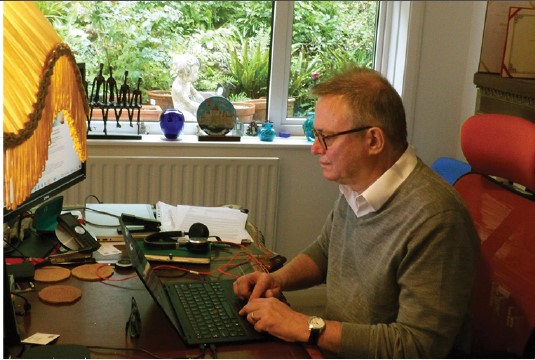
PAC World: Is there any specific reason to choose an industrial career?
P.C.: After graduating with my BSc degree in 1977, I could have continued at UMIST and studied for a PhD degree. However, having started primary school in 1961, sixteen years later, i.e. by 1977, I thought I should get some real work experience in a successful company that developed innovative products for a global market. GEC Measurements and the engineers I worked with, gave me tremendous support and encouraged me to develop my skills and become a better engineer.
PAC World: Is there any specific reason to switch to an academic career?
P.C.: Following the privatization of UK Power Utilities in the late 1980’s, manufacturing companies such as GEC went through massive changes, the UK market for power equipment shrunk massively and companies were totally dependent on global sales. This encouraged a merger between the power activities of GEC (UK), Alstom (France) and later AEG (Germany). From my perspective, research projects were cancelled, and members of my team were moved away from research and longer-term projects into near-market development activities. Perhaps I should have moved to France, but decided it was time for a career change and discussed the possibility of joining UMIST with Ron Allan. Thankfully, I was successful and in 1991 joined as the UMIST Power Systems Group as a Lecturer in Protection and Control.
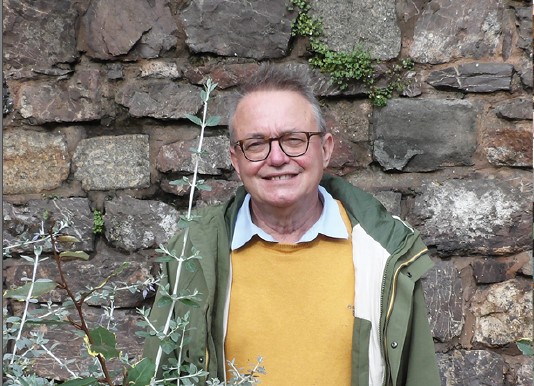
PAC World: You have spent more than ten (twenty) years working with different universities in China. What is driving this cooperation?
P.C.: China is going through massive changes in its power system and especially in the protection and control field. My activities involved scientific links with leading experts in the field at Tsinghua, Beijing Jiaotong, Shandong and NCEPU Universities and helped me understand how protection technology is evolving and provided access to able researchers who could join my UK based research team as PhD students, post-doctoral researchers and visiting academics. Many of these researchers stayed in the UK after they completed their studies or research, and now are important contributors to the UK power sector.
My visits to the universities in China were often linked to conferences and provided opportunities for both me and my researchers to present and discuss our ideas, and of course learn from others.
PAC World: What do you think about the importance of participation in working groups?
P.C.: Networking is critically important for engineers and academics. In my early career this mainly involved IET professional groups, but later most of my activities were related to CIGRE B5 working groups. I cannot over-emphasize the importance of CIGRE within the Global Power Sector, both Electra and their working group reports are extremely valuable and are an important source of knowledge for protection and control engineers at all stages of their careers. Participation in CIGRE working groups as a regular or corresponding member, or as a shadow group member, is important in building your network and learning from experts and avoiding problems which over countries may have experienced.
PAC World: You spent more than twenty (thirty) years teaching at universities. Do you see any difference in the students in 1990ies and today?
P.C.: I have taught at all undergraduate and postgraduate levels within the UK university system. From an undergraduate perspective, the average student entering a university today has less hands-on knowledge, whereas 30 years ago many played with electronics as a child, this does not happen today. Obviously, the change is related to the complexity of modern home electronic systems and the difficulties in even opening the box. However, students have enhanced skills in the use of computers and information gathering. It will be interesting to see how AI changes the future of EEE education, and if academics will spend more time explaining what information, equations and figures mean, and how to distinguish true facts from fiction.
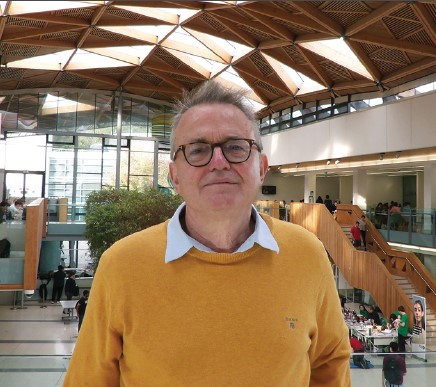
Generally, students I teach today are as able as their parent’s generation, but some do not know what they want, and others are less realistic about their immediate futures. However, the big change is what comes after university, 30 years ago we educated and trained many of our students for engineering careers in large companies, and often they would stay with these companies for many years, slowly climbing up the career ladder. Now students join a company, stay for a few years, then move to another company obviously at a higher pay level. Often this reduces their technical specialism, especially in a subject such as power system protection, but does broaden their expertise and encourage their progress into management.
PAC World: You have been involved in research on a wide range of topics – power system protection, interfacing renewables to the power grid, smart grids and many others. How do you explain your interest in so many topics and do you have a favorite?
P.C.: Power System Protection is a small part of the transition from a fossil fueled synchronous machine-based power system, into a low carbon smart grid that incorporates renewables and in future storage. Most of my career has been related to the problems that occur when faults or disturbances occur on transmission and distribution networks. All these networks are changing, and protection must adapt to cope with the changes. I believe a power system with a low fault level is better than one with a high fault level, and think it is illogical to install synchronous condensers. Power Electronics and inverters will change our power systems and protection engineers need to understand what this means for their relays and setting calculation. Net Zero, and the renewable dominated electrification of the complete energy landscape is a tremendous opportunity for electrical engineers, I just wish it had happened in the UK forty years ago.
PAC World: You have been participating in conferences for many years. What do you think is their role in our industry and why is it important for students and practicing engineers to participate in conferences?
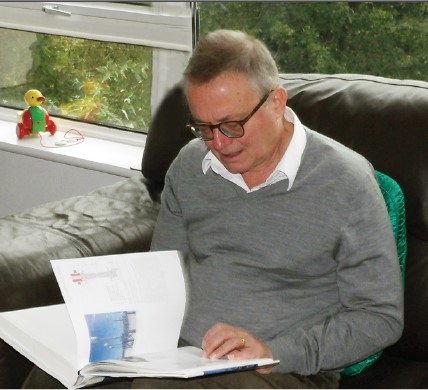
P.C.: Conferences are critically important for our industry, and arguably the best way of learning something new and understanding the problems other face. If you do not interface with others, you tend to re-invent something that already exists and generally your design will be less effective than it could have been. Conferences are also an important networking opportunity, and the person you spoke with in the past, might be able to help you understand why your protection scheme mal-operated, and in many cases provide advice on how the problem can be solved. It is critical we learn from the past, and do not repeat the mistakes others made. I often tell my PhD students to study “old” protection books and reports since this will help them understand how protection was implemented with early electronic and electromechanical relays, and then extrapolate how these ideas might be implemented in a numerical system. From a UK perspective, the “English Electric Protection Relay Guide” is one of the best, especially as many of the devices are still being used on UK distribution networks.
PAC World: You have been actively involved in both IEEE, IET and CIGRE. How do you see their role in our industry?
P.C.: Professional organizations, such as CIGRE, IEEE, IET and CSEE, are critically important for the future growth and well-being of electrical engineers. I joined the IET/IEE in 1974, the IEEE in 1983 and CSEE in 2020, and have been actively involved in CIGRE as an expert member since 1983. Purely considering protection and control, and taking a global perspective, membership of a CIGRE B5 working group is critically important, since this gives you opportunity to network with leading experts from around the world and most importantly to learn from them. In the past this tended to require international travel, but now with video conferencing and mirror/shadow groups, it is less important to be physically present at a working group meeting. Obviously, the IEEE is active globally, but when you consider protection and control, the working groups tend to meet in North America, which makes it more difficult for experts from other regions to actively join specialist groups.
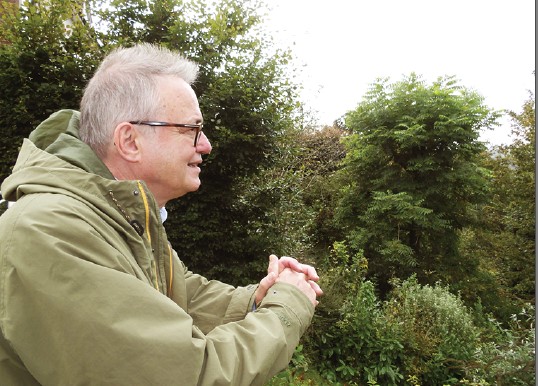
When I was a young relay design engineer, I learnt my protection skills from experts in CIGRE working groups, IEE protection networking activities and my more experienced colleagues in GEC Stafford and the CEGB. It is now more difficult for less-experienced protection engineers in countries such as the UK to learn their skills from colleagues, hence active involvement in professional bodies become even more important.
PAC World: You have been doing consulting work for many years. What do you think are the benefits of academics working with industry?
P.C.: I left a full-time engineering role in a protection relay manufacturer in 1990 and joined academia. Since then, I have worked with numerous organizations, from the power equipment manufacturing sector, transmission and distribution network utilities, consultancy companies and regional and national governments. Often, the researchers in my academic teams were delivering research and innovation solutions, predominantly to the challenges in transforming a traditional power system into a Smart Grid dominated by intermittent renewables. The protection and control challenges are greater now than when I started my career, but challenges create opportunities, especially for engineers who want to change the world and deliver an affordable and environmentally appropriate energy future.
PAC World: What do you think is the impact of IEC 61850 on the future of protection and control?
P.C.: Digitalization of the systems that control all aspects of our energy infrastructure is critically important for our future, especially as Nation’s transition from the burning of fossil fuels to the use of renewables. Standardization and especially IEC 61850 will help ensure a smooth transition and avoid the pitfalls associated with proprietary protection and control solutions.
PAC World: What is the greatest challenge you faced during your professional career?
P.C.: My greatest challenge was moving from an R&D role in a manufacturing company to a research and teaching role in a university. At the time, I had relatively few journal papers and my conference papers were generally used for marketing purposes. In industry, you lobby and persuade the management teams to give you funds to design a new product, and once this has been achieved you build a team and try to deliver according to the Gantt Chart, whilst recognizing events will occur which force a change in direction. In a university, you have a day job related to teaching and administration, and a “spare time” job related to research. Delivering on the latter, whilst maintaining a reasonable work-life balance is a challenge for research active academics, especially as they are establishing a research team and reputation.
PAC World: What do you consider your greatest professional achievement?
P.C.: Taking ideas from academic projects and converting them into products.
PAC World: You have received different awards. Which one do you consider the most important to you?
P.C.: Receiving an award from CIGRE for my contribution to B5 and protection and control.
PAC World: Do you believe that we are going to see more adaptive protection applications in the future?
P.C.: Most power systems were relatively simple and dominated by synchronous generators that deliver significant fault current. As we transition to a low-carbon energy future, our power systems will have to cope with periods where significant power is supplied by inverters, and the fault currents are comparable to the load currents. This means protection will need to adapt its settings in real-time or change its mode of operation in accordance with prevailing network conditions. A reduction in the magnitude of the fault current, is good for primary plant, but creates problems for conventional relays, and especially overcurrent or distance protection. Perhaps in the future, smarter adaptive protection, based on differential or travelling wave techniques aided by wide area communication systems, will dominate, but the transition from the legacy systems of today to the smart systems of the future will not be easy.
PAC World: Do you think it is possible to prevent wide area disturbances and blackouts?
P.C.: Wide area disturbances and blackouts are often a sign of weaknesses in a grid or a failure to build sufficient infrastructure to cope with demand growth. Sadly, blackouts will continue to be a problem in some countries, but hopefully as less developed countries become more developed, infrastructure will improve, and the grid will become more resilient. From a UK perspective, as we transition from a gas dominated power system to one based on renewables, HVDC interconnectors and nuclear, I expect the number of local blackouts to initially increase, but as the grid becomes smarter and storage is fully integrated into the energy system, blackouts will become memories from the past. Smart, adaptive protection and control will help ensure our lights stay on, even during extreme weather events.
PAC World: How do you see the future of our industry?
P.C.: The importance of protection and control will increase, and advanced solutions will be required globally. I suspect more mergers of companies will occur, and a relatively small number of multi-national companies will dominate the global market. Smaller national or regional companies will continue to supply specialist products, but globalization and perhaps even AI may force change.
PAC World: You are still actively involved in IET and CIGRE, conferences, consulting and innovation. What keeps you going?
P.C.: I enjoy attending meetings and conferences, listening to the ideas of others and hopefully influencing their work in a constructive way. I particularly enjoy the education and training of students and engineers, and where possible helping others develop their innovative ideas. My consulting roles are often related to credibility checks or providing advice when problems are experienced, and I find this type of activity challenges my knowledge and hopefully keeps me reasonably young.
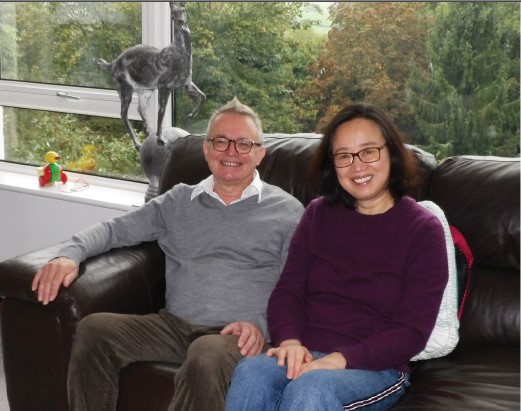
PAC World: How do you balance your active professional life with your family life?
P.C.: As I grow older and hopefully wiser, I have learnt to balance work and home life. This is now easier, since my three sons are established in their life and careers, and my wife is an academic with a busy professional life.
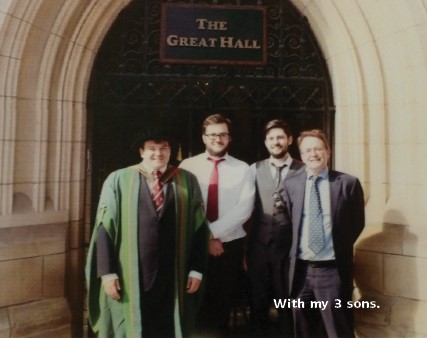
PAC World: What do you consider your greatest personal achievement?
P.C.: Continuing to enjoy research and teaching, 33 years after I first joined UMIST as a lecturer and 45 years after I began to recognize the importance of protection and control.
PAC World: What do you like to do when you are not working?
P.C.: Gardening and when it is dark or raining, listening to and discussing news and current affairs.
PAC World: You travel a lot all over the world. Do you have a favorite place?
P.C.: Paris.
PAC World: Do you have favorite music?
P.C.: Imagine by John Lennon.
PAC World: Your favorite form of entertainment?
P.C.: Travel and trying new types of food.
PAC World: What is your favorite food?
P.C.: Cheese and Wine.
PAC World: Do you have a motto?
P.C.: Always be optimistic.
PAC World: Is there anything you would like to say to the young PAC engineers around the world?
P.C.: Learn from the past, and do not re-invent the wheel.
PAC World: Is there anything that we didn’t ask you that you think can help our readers better understand who you are?
P.C.: I have always tried to be positive and accept opportunities when they become available.
Biography:
Peter Crossley is a part-time Professor at the University of Manchester and the University of Exeter. Prior to joining the Exeter Smart Grid Centre in 2021 and re-joining the Manchester EEE Department in October 2023, he was Director of the EPSRC Centre for Doctoral Training (CDT) in Power Networks. He is a named author on over 100 Journal papers and is a Fellow of the Chinese Society of Electrical Engineers, a Senior Member of the IEEE and a Chartered Engineer in the UK.
After graduating with a BSc degree from UMIST and a PhD degree from the University of Cambridge he joined GEC Measurements. He returned to UMIST in 1991, moved to Queen’s University of Belfast in 2002 and returned to the University of Manchester in 2006. In 2020, he entered his semi-retirement years and moved to Devon, where in addition to being a part time Professor he tends his garden.





